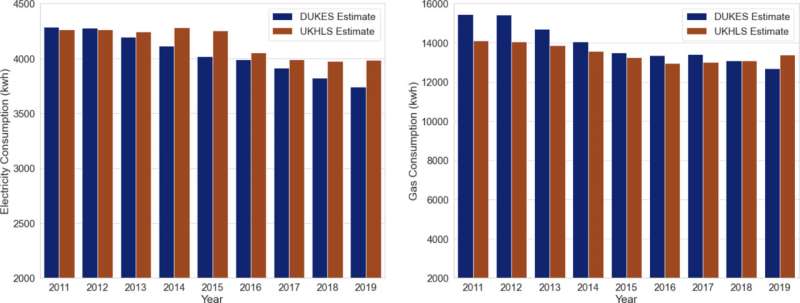This article has been reviewed according to Science X's editorial process and policies. Editors have highlighted the following attributes while ensuring the content's credibility:
fact-checked
trusted source
proofread
Poverty premium on energy costs impacts poorer households

People living in poorer households are more likely to face higher energy costs than those who do not, a study shows. Those in low income households are more likely to pay more for their basic energy tariff and also incur higher costs per unit of energy compared with more affluent households, research suggests.
The study found people can incur higher premiums through multiple pathways—including the use of non-standard billing methods such as prepayment meters. Other factors which increased the likelihood of higher premiums include the presence of children or unemployed adults in a household and living in rented accommodation, an apartment or a flat.
On average, poor households paid between 10 to 20% more per unit than higher income households for both gas and electricity, between 2011 and 2019, the research found. Researchers say the findings shed light on the average premiums incurred by poor households, and could aid targeted policy interventions.
A team at the University of Edinburgh applied statistical methods to two large datasets, to measure how much people from poorer households pay for their gas and electricity use, and the drivers that lead to higher costs. The paper is published in the journal Energy Economics.
Researchers merged two sets of UK household data with figures from the UK Government's National Energy Efficiency Data-Framework (NEED). They combined the data with a statistical theory in a new approach to assessing the energy premiums faced by those in poorer households.
They found that household poverty status significantly affected the likelihood and intensity of gas and electricity premiums. This was the case even when other factors such as property type, payment method, geographical location, gender and age were taken into account.
Researchers say their method, which is based on detailed household-level data to compare energy expenditure per unit between households with different incomes, is an accurate approach to measuring how poverty can influence energy costs.
Fiona Rasanga, of the University of Edinburgh Business School, a Ph.D. student who led the study, said, "The findings shed light on how the poverty premium—or the idea that the poor pay more for essential goods and services—directly impacts the economic well-being of poor households. Policymakers could use the proposed measurement approach to keep track of the poverty premium and its economic impact on households."
More information: Fiona Rasanga et al, Measuring the energy poverty premium in Great Britain and identifying its main drivers based on longitudinal household survey data, Energy Economics (2024). DOI: 10.1016/j.eneco.2024.107726
Provided by University of Edinburgh





















